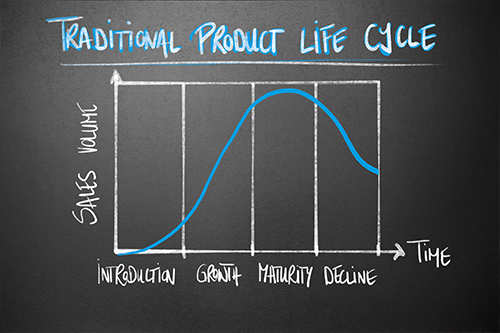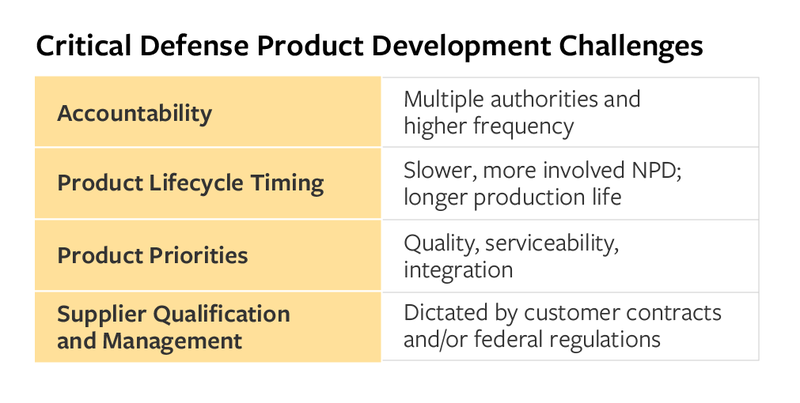ITAR and EAR Compliance and Modern Product Development (Part III)
 In Part I of this series, we concluded that a secure government-grade Cloud PLM provides a better-shared responsibility model as well as an enabling platform for doing the work of product development. In Part II, we reviewed the intricacies of International Traffic in Arms Regulations (ITAR) and Export Administration Regulations (EAR) as they apply to how you manage export-controlled technical data. Meeting these regulations while enabling your teams with the flexibility and transparency needed to make great on-time products is critical to company success. We reviewed primary considerations for any tool you use to manage regulated product data; you can download an assessment spreadsheet that will help you determine how any solution, including Arena PLM for AWS GovCloud, supports the requirements.
In Part I of this series, we concluded that a secure government-grade Cloud PLM provides a better-shared responsibility model as well as an enabling platform for doing the work of product development. In Part II, we reviewed the intricacies of International Traffic in Arms Regulations (ITAR) and Export Administration Regulations (EAR) as they apply to how you manage export-controlled technical data. Meeting these regulations while enabling your teams with the flexibility and transparency needed to make great on-time products is critical to company success. We reviewed primary considerations for any tool you use to manage regulated product data; you can download an assessment spreadsheet that will help you determine how any solution, including Arena PLM for AWS GovCloud, supports the requirements.
Now, we want to look at the business of making products, particularly if you service both commercial and defense markets or are expanding from commercial into defense. While the steps to design and deliver a product are the same—concept, design, test, release, sustain—for both markets, companies find that the emphasis and cadence differ.
The full list of products under ITAR and EAR ranges from fabrics, tactical uniform gear, and mechanical components to RF arrays, rugged hardware, avionics systems, and all things aerospace. If your products fall into the regulated space, you will need to ensure your processes, people, and systems support regulatory compliance regardless of your industry space, product volumes, timelines, and product complexity. However, for the rest of this discussion, we will focus on manufacturers of complex (electro-mechanical) products, whether finished goods or assembly level, as this is where certain unique aspects of defense can impact your priorities.
For this focus, I sat down with Mark Andres, Senior Solutions Architect at Arena, a PTC Business. Mark spent 12 years at Ball Aerospace, working with the defense product development teams to ensure product data, processes, and systems supported their team needs. He also helped further Ball Aerospace’s delivery of mission-critical defense products of the highest quality and compliance.
How defense product development differs
 Product development for commercial markets and defense markets share much in common. Teams take an idea from concept through design and test to realization with new product introduction, and then into
Product development for commercial markets and defense markets share much in common. Teams take an idea from concept through design and test to realization with new product introduction, and then into
production and support. Your business concerns include costs, quality, time to market, supply chain logistics, and more—irrespective of the markets you are in. However, if you are marketing to defense, you need to consider the differences and how they impact your product development decisions.
Accountability
The defense industry brings additional accountability burdens. The obvious are the compliance program, export controls, and policies necessary to meet ITAR or EAR regulations. But accountability doesn’t stop with the regulations. “Certainly, internal audits are a discipline all companies want to practice,” Mark confirmed when we discussed accountability. “As a defense product company, you are often spending against government money. This means you should expect customer audits that include not only product, processes, and systems, but also financial aspects and your suppliers.” For many manufacturers, ISO 9001 and AS9100 certifications are competitive advantages or implicitly required to gain customer contracts. These standards require additional audits, most often on a yearly schedule. Finally, this environment is not static. As a defense product contractor, you can be impacted by changes in the federal landscape, whether regulatory, financial, or strategic initiatives. As the landscape shifts, you will need to adjust your programs, contracts, and processes to ensure compliance.
Product Lifecycle Timing
While the speed of product development and the length of production life vary to suit what your product is, for many manufacturers in defense the overall product lifecycle is longer than in commercial. Why? The products themselves can be bigger and/or more complex; the testing burden can be higher given the product’s functions; and the product may fit into a much larger system or platform (e.g., airplane, ship, satellite station, launch platform). Negotiations and design review approvals with the customer can be slower. For export-controlled product, supplier approvals require additional attention. “Designing this year’s drone for the Christmas season can be considered a bit of a ‘mosquito’ product lifecycle; delivery of leave-behind subassembly equipment for a space telescope is, perhaps, a dog-aged lifecycle; building an actual satellite can be likened to an ‘elephant’ lifecycle,” explained Mark. And, the length of product development, testing, and production use plays into product design decisions regarding obsolescence and serviceability. Teams should plan from the beginning on the natural obsolescence of components over the longer life of the product, building in flexibility and tactics to address serviceability.
Product Priorities
With many defense products being in service far longer than commercial products, teams may need to weight product design priorities differently than in commercial. Specifically, quality and serviceability become more critical and should then inform actions from design and supplier qualification to test scope and execution. Additionally, if you are providing subsystems, integration is a product priority, as it is with commercial. However, in the defense space, with controlled technical data, expect more design review boards and more back and forth with not only your customer and supply chain, but also with other subassembly providers and potentially your customer’s customer (the end customer—often a prime or an agency).
Supplier Qualification and Management
As we’ve discussed accountability and product priorities, we can understand that the supply chain becomes a critical business aspect. With the need to design for long serviceability as well as planned part obsolescence, coupled with the export-control requirements of any identified controlled technical data, supplier qualification requires attention. Additionally, flow down of regulated requirements to supply chain partners who may not be regulated necessitates closed-loop quality and change processes with security. Mark states, “Every time designs or parts change hands, you have potential supply chain vulnerabilities—you have to plan for this in your SOPs and then ensure your systems and tools support compliance to the SOPs.” And, as we mentioned earlier, all players in the defense industry must stay abreast of changes in the federal initiatives. One of the most recent, Deliver Uncompromised, is the Department of Defense’s focus on cradle-to-grave security in the supply chain, making security equal to cost, schedule, and performance in defense acquisitions. The program is currently in pilot and will likely entail agencies and primes adding supply chain security frameworks as a significant evaluation area in contracts. To learn more about Deliver Uncompromised, watch William Stephens, Director of Counterintelligence, Defense Security Services, discuss supply chain security threats, and this new initiative.

Systems engineering: an organizing structure
For some defense electronics manufacturers, systems engineering is a known discipline. However, if you are new to defense, you may not currently practice systems engineering. Systems engineering is interdisciplinary and provides a holistic approach to managing complex systems over the entire lifecycle. Systems engineering ensures requirements and system validation considers the complete-use cases and problems, providing customer and stakeholder focus. If you do not already have systems engineering, consider adding this function to your team, states Mark during our discussion. “Systems engineering brings benefit to all the processes, from requirements management to testing, new technology insertion, end-of-life component bridge plans, and more.”
Next steps
If you need a review on how ITAR and EAR regulations apply to the tools and systems you use in product work, read our first blog. If you need a simple assessment tool to track how solutions do against your compliance requirements, go to the second blog and download the Excel assessment workbook.
Ready to investigate modern PLM that will meet your EAR and ITAR compliance needs and give you a competitive advantage in all markets? Learn about our offering here and then schedule a call to tell us about your business needs. Read about the key business questions ITAR and EAR.


